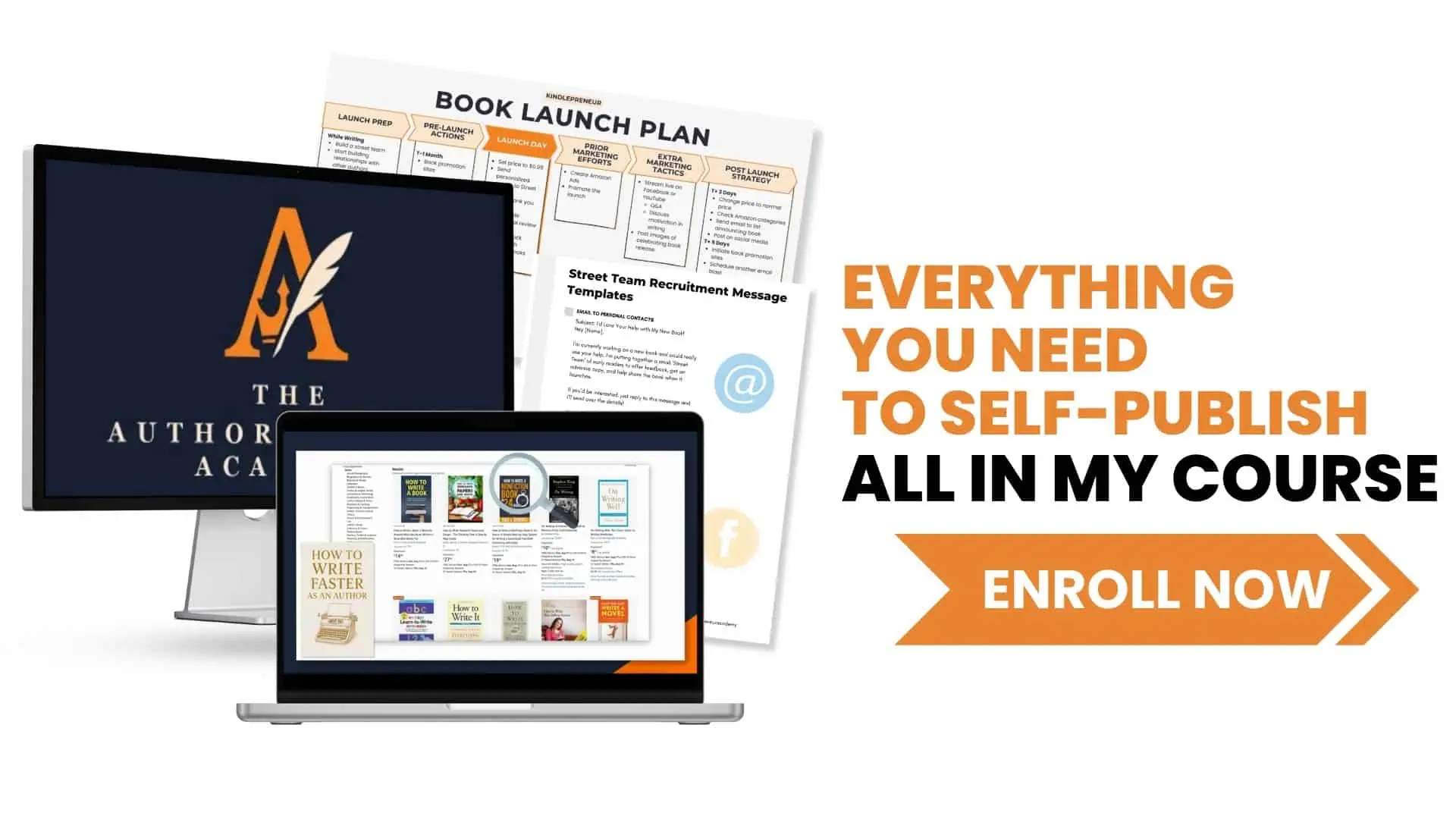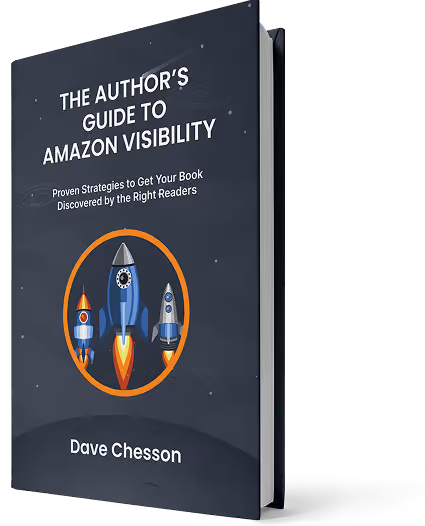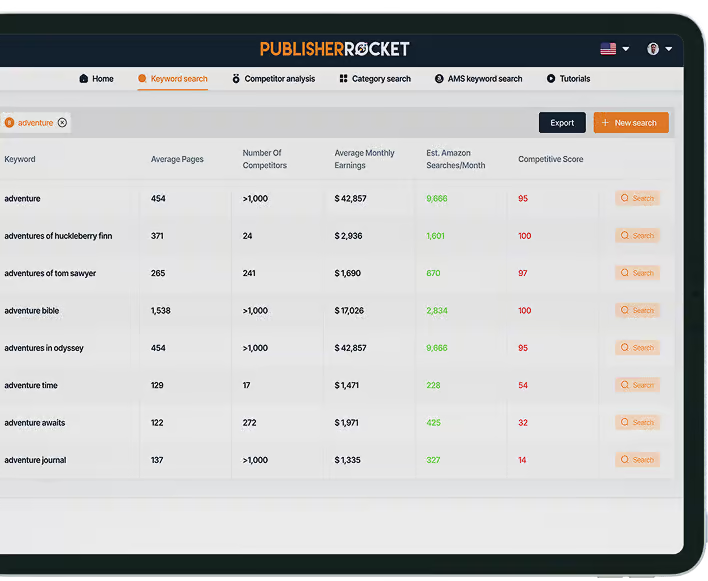Did you know a book press release can get picked up by local affiliate sites tied to major networks like Fox, NBC, or ABC?
It’s true. And it’s easier than you might think.
In this guide, you’ll learn how to target media outlets (from niche blogs to local newsrooms) that might feature your book. National coverage is a different ballgame, but local and genre-based pickup is well within reach.
The key is doing it right. When you understand what makes a press release work, it becomes more than a vanity play. It can boost sales, increase visibility, and position you as a credible expert – all without breaking the bank.
Let me show you how.
- What is a book PR release – the good and the bad
- How to write a book press release
- Free book press release template
- Services and methods to get your PR in front of big agencies
⚠️ Quick Warning Before We Begin:
Used well, this can be an incredibly effective marketing tactic.
But done poorly, or without taste, it can come across as spammy and crummy.
So please: use this knowledge for good. Stick to the Kindlepreneur principles I teach elsewhere, and apply them as you go through the steps below.
This only works when you do it right.
What is a Book Press Release?
Back in the day, newspapers had limited space, and getting featured meant competing for a tiny column inch.
These days? Space isn’t the problem.
Writers, journalists, and editors are constantly looking for legitimate stories they can publish on their websites. And if your book looks like a good fit for their audience (and they don’t have to do much work to make it publishable), you’ve got a real shot at landing free publicity.
That’s what a press release is for.
A book press release is a way to package your book’s story in a format that appeals to journalists, news sites, and news outlets. You’re doing their work for them, giving them a ready-to-run story that looks and sounds like something they’d normally cover.
And thanks to syndication networks, you don’t have to pitch each outlet one by one. Many smaller news affiliates will publish your release automatically as long as it meets basic formatting requirements.
So all you need is one good press release for your book that's well-written, newsworthy, and properly structured… and you’re off to the races.
What Makes a Great Press Release?
If you want your press release to work, it has to be newsworthy.
Just publishing a new book? That’s not news. Not anymore.
So how do you give journalists and editors something worth clicking?
Try leading with one of these:
- A surprising or powerful personal story
- A fascinating or highly relevant book topic
- A prestigious or rare award you’ve won
- A milestone that feels legitimately impressive
- A creative or unusual marketing effort
- A tie-in with someone or something well known
- A hook built around a “hot topic” (e.g. AI, Taylor Swift, ultra-processed foods… whatever’s buzzy)
The goal is to make someone stop and say: “Wait… that’s interesting.”
Once you’ve got that, the next step is packaging it in a way that’s easy to publish. Let me show you what that looks like (and what it doesn’t look like).
Sometimes It Just Doesn't Work
To test how well a generic press release performs, we ran an experiment.
Using a standard package from PR Web, we published a press release for a wonderfully quirky book called How to Be a Cat by Pamela Hodges. The book had genuine charm and impressive endorsements from authors like Marion Roach Smith, Joe Bunting, Jeff Goins, and even Steven Pressfield.
So what happened?
Nothing.
The press release was picked up by just 4 syndicates. It drove zero noticeable traffic. And there was no lift in sales.
That’s $99… gone.
What did we learn?
Even if your book is great…
Even if notable authors are behind it…
A boring, by-the-numbers press release won’t cut it. Mass distribution can’t save you if the hook isn’t newsworthy.
But flip that equation with a timely hook and a smart press release and things can go very differently.
Sometimes it Does
Years ago, an author released a satirical erotica title called A Gronking to Remember, based on NFL player Rob Gronkowski.
At first, the book didn’t make much of a splash.
Then… the drama started.
The author had used a photo of a recently engaged couple on the book cover without permission. When the couple discovered their engagement photo had been repurposed for, well, that, they were understandably upset.
The incident sparked a small media outlet frenzy.
A press release capitalizing on the controversy helped launch the book into the spotlight. Sales exploded. Rob Gronkowski even appeared in a spoof trailer for a fake movie adaptation on Funny or Die.
(We won’t link to it here. Let’s just say… it wasn’t family-friendly.)
The point?
The press release worked because the story worked. It was timely, weirdly fascinating, and made people curious.
That’s the real secret. If you can tap into something that gets people talking, your press release becomes a launchpad, not just a formality.
How to Write a PR for a Book
So now that you’ve seen the difference between a cleverly written PR versus a generic one, how exactly do you go about creating a press release for your book?
Thankfully, you don’t need to produce an evil political manifesto or write dubious football fan fiction! (wipe sweat from brow now)
However, you do need to know the format of a book press release and some best practice advice on writing one. Remember, a legitimate editor is more likely to accept a press release on your book if it's properly formatted and they don't have to do too much work on it.
Book Press Release Template
A press release for a book follows a fairly standard format which helps with its mass syndication:
It’s conventional to state FOR IMMEDIATE RELEASE in bold, at the top of your press release.
- Headline – <20 words
- Subheading – Optional, but sentence length
- Dateline – Location and date (include your city/state/country)
- Intro – Needs to be attention-grabbing, can include a problem/solution hook
- Author Quotation – MUST be weighty, avoid bland, empty statements
- Mini Author Bio – Emphasis on ‘mini’ (author name and 1-2 concise paragraphs… every sentence must be impactful)
- Book Information – Similar to the author bio – 1-2 impactful paragraphs at most
- Contact Details – A place to include links to your website, email, phone number, social media, and, most importantly, how to get review copies
- Call To Action – It’s essential to end on a CTA, so pay due attention to this
- Optional Hashtags – Depending on your use of social, you can include hashtags here. Only do this if they will be used, though – nothing looks sadder than a hashtag with no one using it.
The conventional method for ending a press release is the hash symbol, three times, centered, like this:
###
Step 1: Use the Above Book PR Template
So now that you know the format of how your press release should look, how do you write a book press release?
We’ll go into each of section of the book press release template in turn. Always remember that you need to write like a journalist – not an author. Clear, concise communication is your guiding philosophy.
So, break out your favorite writing software, or Scrivener in my case, and let's begin.
Headline
Just as a book title needs to be carefully chosen to interest potential readers, a press release needs a well thought out headline to make it stand out from the endless press releases journalists deal with.
The basic concept is to write a headline which compels the reader to continue reading. This could be through creating intrigue, using the power of fear, or making a bold or unusual claim.
The intrigue/compulsion factor of your book press release headline needs to be balanced by some actual information. The best headlines both intrigue and inform – neither function can be ignored. My article on how to select the perfect book title can help with your headline selection as well as these writing tips for PR headlines.
Also, if you are coming up with dead ends, check out the list of book title generators. Most of these tools come from great headline and article title generators.
Subheading
This is optional. Some press releases use a subheading; others don’t. If you think a subheading could help your book press release, make sure it is adding to it, rather than just restating the headline in a slightly different way.
A subheading can be a way to get the inform/intrigue balance right – if your headline is more heavily one function than the other, the subheading can be the place to compensate and redress the balance.
Dateline
No, this isn't your book's release date. It's pretty straightforward – write the date and location you are writing from. Don’t try and get clever here.
Intro
Other than the headline, this is the most important aspect of your book press release. You might want to lead with something impactful, such as a controversial statement or an emotionally engaging sentence related to the book you are promoting.
It’s also important to get to the point. Journalists scan press releases; they don’t read each one word for word. You need to avoid beating around the bush and include only pertinent, important information.
Author Quotation
This could be something controversial, something interesting, or something emotionally engaging. Avoid at all costs something bland, vanilla or dry. It’s better to leave this out entirely if you can’t think of anything relevant.
It’s also important to make any author quote you use relevant to your book press release. If it’s a family friendly book, for example, avoid making a statement that could be seen as offensive or inappropriate. The press release for your book needs to work as a cohesive whole.
Mini Author Bio
This should be factual and to the point, but it doesn’t need to be boring. Consider finding unconventional ways to say conventional things. If you can make a journalist smile, you will stand a much greater chance of making an impression on them, and thus, having your book featured.
If you are targeting a press release to a particular journalist or publication, you should consider highlighting information about yourself that you think will appeal directly. The basic principle here is to say “Hi, look, I’m the kind of person your readers would love to know more about.”
Book Information
Avoid hyperbole or cliche here. You want to convey solidly what your book is about and what it contains. Try and make the language punchy and descriptive. It should be easily understandable without being too dry and generic.
Contact Details
Be smart about this. If you have a X (Twitter) account that you never use, don’t include it. Email, phone number, and your author website are the bare minimum here.
Call To Action
Failing to include a powerful call to action is like selling tickets to a speech you’re giving, packing the venue…and then saying nothing to the audience. If people have read to the end of your press release, it means you’ve engaged and interested them. Don’t waste that opportunity! Maybe you want people to visit your author page, attend a book launch event, or check out some other aspect of your author activities. Be clear about what your aim is.
The best call to actions are clear, direct, and urgent. Don’t include multiple calls to action – choose one and express it in the simplest, most direct way possible.
Step 2: Distribute With Purpose (Not Just Volume)
Once you’ve written your press release, it’s time to get it distributed. This process is called syndication. And the good news is, you don’t have to do it by hand.
You can choose a syndication service, and they’ll send it out for you:
- PRWeb: Offers tiered packages starting at $110 for Basic, $230 for Standard, $340 for Advanced, and $455 for Premium. Higher tiers offer broader distribution, placement on partner sites, and additional book promotion support.
- EIN Presswire: Starts at $99.95 for a single release and is known for solid pricing and SEO value.
- Newswire.com: Pricing starts around $349, with options for multimedia distribution, analytics, and targeted outreach.
These services can help you reach a wide network of news and media websites, but here’s the catch: “reach” doesn’t mean “read.”
There’s a big difference between your press release appearing on thousands of sites and someone actually reading it or taking action. One author saw over 12,000 online impressions, but only 300 real views.
That’s why your press release must be more than filler. It needs to be newsworthy and attention-grabbing; otherwise, it’s just noise.
Depending on your goals, you can pay as little as $30 for basic self-service distribution, or over $8,000 for a premium, full-service campaign handled by a PR agency. Most reputable services fall somewhere between $100 and $500 per release, and that usually doesn’t include writing.
Author Press Release Services
If creating an epic book press release scares you or you don't think you can come up with something, then I'd recommend finding a book publicist or checking out some of these special book press release services.
Warning: I have not tried any of these for my books but instead did research on what people were claiming.
For professional help, you can explore streamlined platforms like Prowly, which provide newsroom hosting, media databases, personalized pitches, and workflow tools starting around $258/month.
Other prominent services include EIN Presswire, GlobeNewswire, Newswire.com, and eReleases.
Traditional PR agencies remain options if you prefer full-service campaigns.
ADVANCED: One added Bonus to Press Releases
Have you ever seen another author's profile picture on LinkedIn or Facebook like this?

Or come across another author's website that touts the following for their work?

Let me demystify this…99.9% of the time, the author did a mass quantity PR release, and believe me when I say they are pretty easy to do.
The truth is that many of the authors who do this didn't get featured on the ABC or Fox that we know. Their book press release showed up on obscure sub-affiliates of these major websites, like NBC Milwaukee or something like that. It's still NBC, right? But not the one you immediately think of…sneaky sneaky.
Let's See It In Action
Final Thoughts on Book Press Releases
You’ve seen what a press release can do when it’s done right.
Not just as a credibility booster, but as a smart book marketing move – one that helps you show up on affiliate sites, pitch real journalists, and earn those “as seen on” bragging rights.
You’ve also seen the trap: a book release on its own isn’t news. But with the right angle? It becomes one.
And whether you write it yourself or bring in the pros, there are solid options for every budget (even those of indie authors).
So if you're holding back…
Why?
The playbook’s right here.
May the press be with you.






